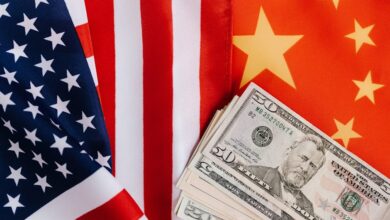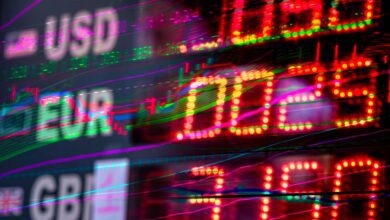Currency Dynamics: Understanding Interest Rates, Geopolitical Influences, and Trading Strategies in the Forex Market

In the dynamic world of foreign exchange (forex) trading, understanding the intricate relationships between various economic factors is essential for success. This article delves into the multifaceted impact of interest rates on currency exchange rates, examining how fluctuations can sway traders’ decisions and market stability. We will explore the significant role of geopolitical events, which can create volatility and uncertainty in forex markets, influencing investor sentiment and currency valuation. Additionally, we will provide actionable strategies for trading major currency pairs, such as EUR/USD and GBP/USD, while highlighting the central banks' pivotal role in shaping currency values.
As inflation continues to pose challenges globally, we will discuss its implications for forex trading strategies, including the popular approach of carry trading, which capitalizes on interest rate differentials. The rise of digital currencies also demands attention, as they increasingly impact traditional forex markets and trading dynamics. Finally, we will guide readers on utilizing economic indicators to predict currency movements, equipping traders with the knowledge needed to navigate this complex landscape effectively. Join us as we unravel these critical themes and enhance your understanding of the forex market.
- 1. **The Interplay of Interest Rates and Currency Valuation: A Deep Dive**
- 2. **Geopolitical Tensions and Their Ripple Effect on Forex Markets**
- 3. **Navigating the Forex Landscape: Strategies for Major Currency Pairs**
1. **The Interplay of Interest Rates and Currency Valuation: A Deep Dive**
Interest rates play a crucial role in determining currency valuation within the foreign exchange (forex) markets. When a country's central bank adjusts interest rates, it sends a signal to investors about the expected direction of the economy, influencing capital flows and, consequently, the strength of its currency. A higher interest rate typically attracts foreign capital, as investors seek better returns, leading to increased demand for that currency and a potential appreciation in its value. Conversely, lower interest rates may deter investment, resulting in a depreciation of the currency.
The relationship is often explained through the lens of the interest rate parity theory, which posits that the difference in interest rates between two countries will reflect the expected change in exchange rates. For instance, if the United States raises its interest rates while the Eurozone maintains lower rates, capital may flow from the Eurozone to the U.S., strengthening the dollar against the euro.
Moreover, the timing and market perception of interest rate changes are critical. Anticipated rate hikes can lead to preemptive capital inflows, while unexpected changes can create volatility in currency values. Traders closely monitor central bank communications and economic indicators to gauge future rate movements, using this information to position themselves ahead of market shifts.
In addition to direct capital flows, interest rates influence inflation expectations, which also impacts currency valuation. Higher rates can help control inflation, thereby preserving the purchasing power of the currency. In contrast, persistent low rates may signal economic weakness, leading to fears of inflation and further currency depreciation.
In summary, the interplay between interest rates and currency valuation is multifaceted, involving investor behavior, economic expectations, and central bank policies. Understanding this dynamic is essential for forex traders and policymakers as they navigate the complexities of the global economy.
2. **Geopolitical Tensions and Their Ripple Effect on Forex Markets**
Geopolitical tensions play a significant role in influencing forex markets, as they can lead to increased volatility and shifts in investor sentiment. When conflicts arise or political instability occurs in a particular region, investors often seek safe-haven currencies, such as the US dollar, Swiss franc, or Japanese yen. This flight to safety can result in appreciation of these currencies while causing others, particularly those from the affected regions, to depreciate.
For instance, during periods of heightened geopolitical uncertainty, such as military conflicts or trade disputes, market participants may react swiftly, leading to sharp fluctuations in currency values. Traders often adjust their positions based on news events, diplomatic negotiations, and statements from government officials, which can create abrupt changes in forex rates.
Additionally, geopolitical events can have broader economic implications, such as impacting trade flows and capital movements. Countries embroiled in conflict may experience reduced foreign investment and disrupted supply chains, which can weaken their currencies. Conversely, nations perceived as stable or neutral may benefit from increased investment as investors seek to mitigate risk.
The interconnectedness of global markets means that geopolitical tensions in one region can resonate across the globe, influencing currencies even in distant economies. For example, tensions in the Middle East can impact oil prices, which in turn affect currencies of oil-exporting and importing nations. As a result, forex traders must remain vigilant and incorporate geopolitical analysis into their trading strategies to navigate these complexities effectively.
3. **Navigating the Forex Landscape: Strategies for Major Currency Pairs**
Navigating the forex landscape requires a keen understanding of market dynamics, particularly when trading major currency pairs such as EUR/USD and GBP/USD. These pairs are among the most liquid and widely traded in the world, making them attractive for both novice and experienced traders. Here are some effective strategies to consider when trading these currencies.
First, technical analysis plays a crucial role in identifying entry and exit points. Traders often utilize charts, patterns, and indicators to gauge market trends and potential reversals. Common tools include moving averages, Relative Strength Index (RSI), and Fibonacci retracement levels. By analyzing historical price movements, traders can better predict future behavior and make informed decisions.
Second, fundamental analysis is essential for understanding the broader economic factors influencing currency values. Key indicators such as interest rates, GDP growth, employment data, and inflation rates can significantly impact currency strength. For instance, a stronger-than-expected employment report may boost the USD, leading to a potential sell-off of the EUR/USD pair. Staying informed about economic news releases and geopolitical developments is vital for successful trading.
Additionally, employing risk management techniques is paramount when navigating the forex market. Traders should always determine their risk tolerance and use stop-loss orders to protect against potential losses. Position sizing is also critical; controlling the size of trades relative to one's overall capital can help mitigate risks and preserve trading longevity.
Finally, developing a trading plan that outlines specific goals, strategies, and performance metrics can enhance discipline and consistency. A well-structured plan helps traders remain focused and avoid impulsive decisions driven by market volatility.
By combining technical and fundamental analysis, implementing robust risk management practices, and adhering to a disciplined trading plan, traders can effectively navigate the complexities of major currency pairs and improve their chances of success in the forex market.
In conclusion, the dynamics of currency exchange rates are influenced by a multitude of factors, including interest rates, geopolitical events, and the strategies employed by traders. Understanding the interplay between these elements is crucial for anyone looking to navigate the complexities of the forex market effectively. Central banks play a pivotal role in shaping currency values through their monetary policies, while inflation remains a critical factor that influences trading strategies.
Moreover, the rise of digital currencies introduces new variables to traditional forex markets, prompting traders to adapt and innovate. As economic indicators continue to serve as vital tools for predicting currency movements, staying informed about these trends is essential for success. Ultimately, a comprehensive grasp of these interconnected topics equips traders with the knowledge necessary to make informed decisions, capitalize on opportunities, and manage risks in an ever-evolving financial landscape.





